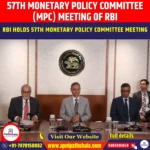Tik-Tok Ban in India
|
General Studies Paper III: IT & Computers, Social Media |
Why in News?
Recently some users in India noticed access to TikTok website through certain mobile and broadband networks. The government clarified that this was a technical glitch and there is no plan to lift the existing ban on the short video platform ‘TikTok’ in India.
Why was TikTok Banned in India?
- India banned TikTok along with 58 other Chinese applications on 29 June 2020. This action followed a deadly clash with Chinese troops in Galwan Valley, which had heightened tensions sharply.
- The Government of India clarified that these applications presented threats to the nation’s sovereignty, integrity, and security.
- Indian authorities warned that TikTok might collect personal data in ways that could allow it to transmit data outside India without permission.
- The Ministry of Electronics and Information Technology used Section 69A of the IT Act. Officials also described them as threats to data privacy and to the safety of the state. The language pointed to grave internal risks.
- Before the full ban in 2020, a partial ban occurred in April 2019. The Madras High Court flagged concerns that TikTok encouraged inappropriate content, including pornography, and that it exposed minors to sexual predators.
Note: The United States also considered a nationwide ban in 2020 and again in 2023, though the app continues to operate there under scrutiny. Several countries including Pakistan, Indonesia, and Afghanistan imposed temporary bans at different times, mostly due to content-related concerns.
TikTok’s Popularity in India before the Ban
- Rapid Growth: TikTok entered the Indian market in 2017 after its parent company ByteDance merged Musical.ly into the platform. The growth was rapid. By 2018, the app had already become one of the top downloaded applications in India. Reports from industry trackers showed that India alone contributed nearly one-third of TikTok’s global downloads by 2019.
- Dominance: TikTok became 2nd and the most downloaded application in India. The year 2019-20 was a turning point. Data from app analytics firms revealed that Indian users collectively spent over 5.5 billion hours on TikTok in 2019. No other short-video platform could compete with such deep engagement. It reached users in regional languages, which fueled adoption at a faster rate.
- User Numbers: By the beginning of 2020, the platform had crossed 200 million active Indian users. This was a staggering figure when compared to its total global user base. India accounted for nearly 30 percent of global downloads at the time. It gave first-time internet users a chance to produce and consume digital content with minimal barriers.
- Influencer Market: By 2020, TikTok had created a full ecosystem of influencers, advertisers, and talent managers. Brands began investing in TikTok campaigns. This created income opportunities in cities and towns where mainstream media exposure was limited. The app supported over a dozen Indian languages. Users in all regional languages could comfortably interact and create.
Impact of TikTok Ban
- Big Loss for Company: The ban in June 2020 created an immediate setback for ByteDance, the parent company of TikTok because India was its largest overseas market. Industry estimates indicated that ByteDance lost nearly 6 billion dollars in revenue after the Indian ban. The ban also reduced TikTok’s global growth momentum because India had contributed close to half of its worldwide downloads.
- Shift in Digital Ecosystem: The ban altered the digital content market in India. Following TikTok’s removal, Indian apps like Moj, Josh, and Chingari experienced sharp growth within a few months. Global competitors like YouTube and Instagram also expanded their short-video formats in India after 2020. This reshaping of the ecosystem gave new opportunities to local firms, but it also created intense competition.
- Disruption for Users: Many small-town influencers had turned their popularity into income through collaborations and promotions. The sudden break ended the careers of many rising stars. By 2020, surveys showed that more than 1 million Indian creators were earning from TikTok in some form. By 2021, data showed a decline in rural content participation.
TikTok Worldwide
- Global Expansion: TikTok was first introduced in 2016, when ByteDance launched Douyin for Chinese audiences. The international version called TikTok was introduced in 2017. In 2018, ByteDance acquired Musical.ly, a lip-syncing app popular in the United States and Europe, and merged it into TikTok. This move gave a strong base in Western markets.
- User Base: TikTok quickly grew to hundreds of millions of users worldwide. By 2020, it had more than 800 million active users globally. The platform later achieved a major milestone by surpassing 1 billion monthly active users in September 2021. As of 2023, the figure had exceeded 1.7 billion users, spread across more than 150 countries.
- The largest user base after China has been the United States, followed by Indonesia, Brazil, and Russia.
-
-
- Surveys showed that by 2022, over 60 percent of global users were aged between 16 and 24 years.
- Its short-video format, easy editing tools, and recommendation algorithm made it a preferred platform for Generation Z.
-
- Revenue Growth: TikTok also became a major player in digital advertising. In 2022, TikTok’s global revenue was estimated at more than 10 billion dollars, driven mostly by advertising and in-app purchases. By 2023, the company was projected to cross 15 billion dollars in annual revenue.
Why is TikTok so Popular Worldwide?
- TikTok became widely popular because of its For You Page powered by an advanced recommendation system. The app tracks viewing behavior and instantly suggests videos that match individual interests.
- The app provides simple editing tools that allow anyone to create professional-looking videos. Users can add music, filters, and effects without technical skills. This accessibility encourages the creators.
- The short-video format is one of the most attractive features. Videos between 15 seconds and 60 seconds fit perfectly into busy lifestyles.
- It allowed small creators to gain recognition without needing a large following first. The algorithm could push a new video to millions of views overnight.
Related Articles









